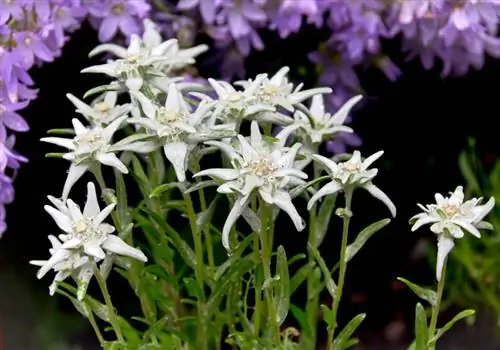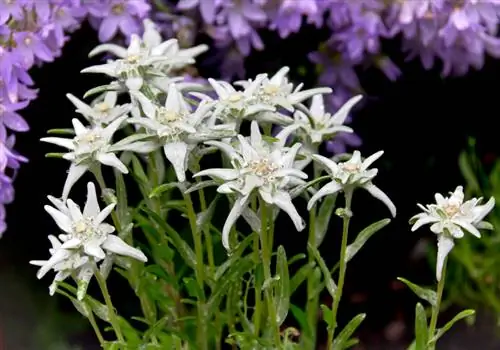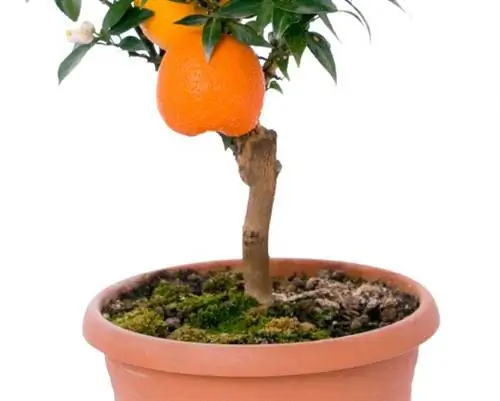- Author admin [email protected].
- Public 2023-12-16 16:46.
- Last modified 2025-01-23 11:20.
The beautiful edelweiss with its star-shaped, velvety hairy inflorescences is suitable for planting both in the garden and in pots. Particular caution is required when kept in a pot, as the pretty flower is extremely sensitive to moisture.

How to plant and care for edelweiss in a pot?
For planting edelweiss in a pot, choose a natural, permeable material such as clay as a planter. Mix sand and potting soil in a 1:1 ratio, add lime and plant the edelweiss. Place the pot in a sunny location and water sparingly.
Choose a suitable location
The distinctive edelweiss is not suitable for keeping as a houseplant, as in such a case it will not receive sufficient sunlight. Topfedelweiss should therefore find its place on a sunny balcony or terrace. However, especially on hot days, make sure that the root area of the plant stays cool, because the flower doesn't like overheating any more than it likes being wet. In principle, however, the more sun the edelweiss gets, the better.
Planting edelweiss in a pot
Planting edelweiss in a pot is particularly advisable if your garden is often infested by many snails - the plant is a sought-after food for the voracious animals.
- Choose a planter made from as natural a material as possible (clay or similar).
- Water can evaporate from the earth, but not from plastic containers.
- The planter should also have drainage holes.
- Do not place the pot directly on a saucer.
- As the bottom layer, fill in clay balls (€14.00 on Amazon) or shards as drainage.
- Mix sand and potting soil in a 1:1 ratio.
- Add a good handful of lime.
- Now plant the edelweiss.
- Wet the substrate so that it is slightly moist.
Best care of potted whites
Edelweiss in a pot is cared for in the same way as specimens planted in the garden, you just have to water it more often. However, be careful not to water too heavily. Instead, it is sufficient to wet the surface of the substrate. Fertilization is not necessary; instead, you can transplant the edelweiss about every one to two years. In winter the plant stays outside, but should be neatly wrapped to protect it from the cold or buried in the garden in the pot.
Tips & Tricks
As soon as your edelweiss dries out from below, it is usually not a sign of dryness, but - paradoxically - a sign that the plant is too moist. Root rot means that the plant can no longer absorb enough water, so it dries up. Most plants with root rot cannot be saved, but you can try and repot the Edelweiss in question into fresh, dry substrate.






